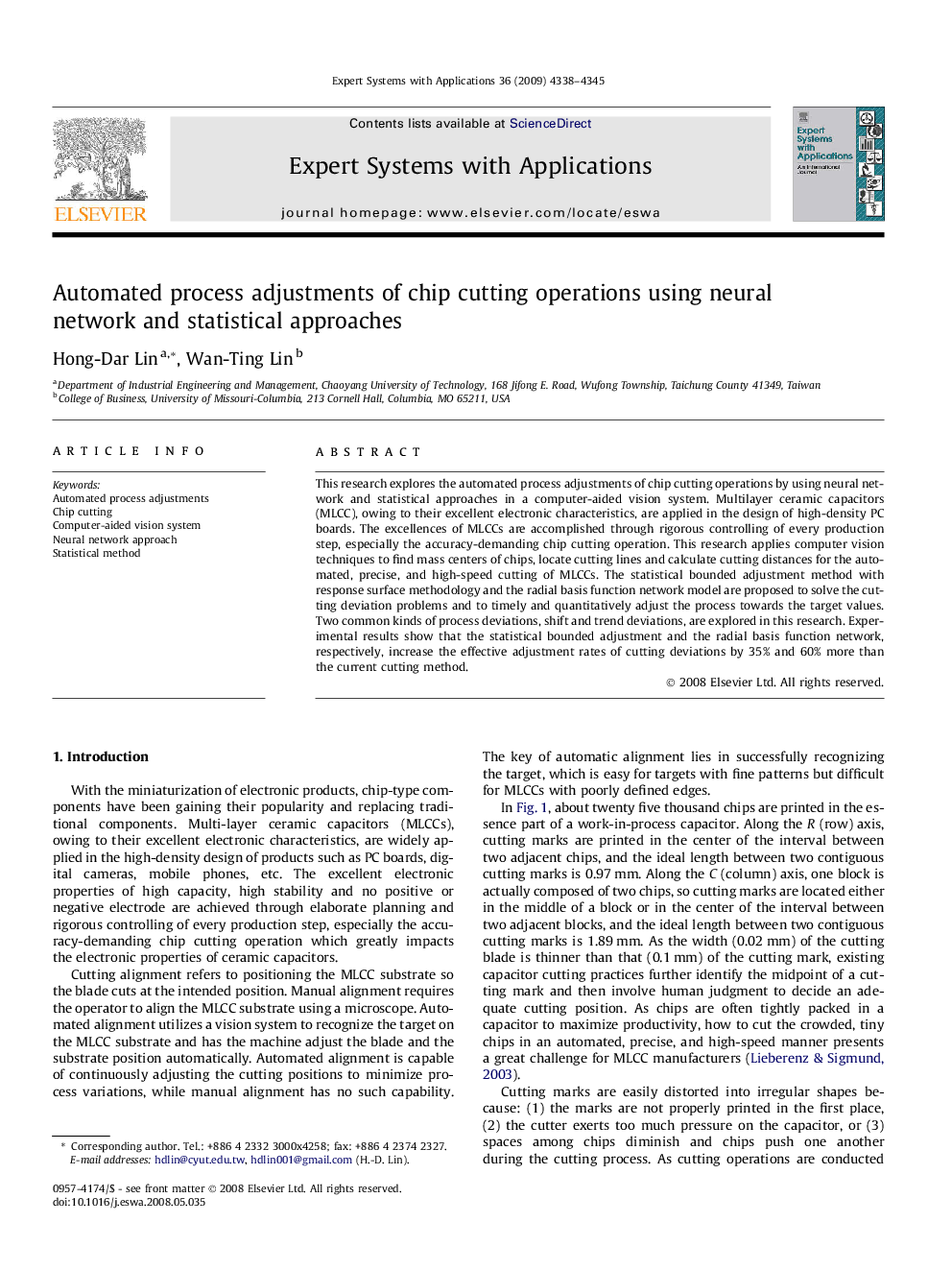| Article ID | Journal | Published Year | Pages | File Type |
|---|---|---|---|---|
| 384722 | Expert Systems with Applications | 2009 | 8 Pages |
This research explores the automated process adjustments of chip cutting operations by using neural network and statistical approaches in a computer-aided vision system. Multilayer ceramic capacitors (MLCC), owing to their excellent electronic characteristics, are applied in the design of high-density PC boards. The excellences of MLCCs are accomplished through rigorous controlling of every production step, especially the accuracy-demanding chip cutting operation. This research applies computer vision techniques to find mass centers of chips, locate cutting lines and calculate cutting distances for the automated, precise, and high-speed cutting of MLCCs. The statistical bounded adjustment method with response surface methodology and the radial basis function network model are proposed to solve the cutting deviation problems and to timely and quantitatively adjust the process towards the target values. Two common kinds of process deviations, shift and trend deviations, are explored in this research. Experimental results show that the statistical bounded adjustment and the radial basis function network, respectively, increase the effective adjustment rates of cutting deviations by 35% and 60% more than the current cutting method.
